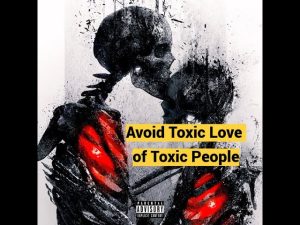Violent Innocence of Narcissist’s Victimhood (Passive-aggression)
1. Covert Narcissism and Passive Aggression
- Covert narcissists exhibit passive aggression rather than assertive aggression. They harbor bitterness, resentment, and envy, channeling aggression through negativistic attitudes or passive-aggressive behaviors [00:00].
- Passive aggression takes many forms and disguises, often not immediately recognized as aggression [01:00].
2. Concept of Violent Innocence
- Violent innocence refers to a person’s obstinate refusal to acknowledge alternative viewpoints, combined with harmful behavior and a lack of self-awareness about the harm caused [02:00].
- It includes claiming moral superiority and innocence despite causing significant damage, thus disavowing responsibility [03:00].
- This term was coined by psychoanalyst Christopher Bolas to describe close-mindedness and lack of empathy [01:30].
- Violent innocence is common in narcissism (both covert and overt) and psychopathy, particularly in gaslighting where the wrong perception of reality is imposed on others [05:30].
3. Gaslighting and Epistemic Injury
- Gaslighting involves deceptive claims and confabulations that narcissists insist are factual, invalidating victims and creating confusion and moral injury to others [06:00].
- This causes epistemic injury by disbelieving and invalidating victims’ experiences [07:00].
4. Moral Shielding and Bureaucratic Copout
- Violent innocence can involve hiding behind rigid adherence to rules, procedures, or norms as a defense mechanism to avoid responsibility for harmful actions [09:00].
- This robotic conformity leads to moral shielding where individuals claim “I have no choice” when causing harm, thereby disowning agency [09:30].
5. Willful Ignorance and Narcissistic Self-Concept
- Individuals or institutions practice willful ignorance to preserve the belief they do not cause harm, protecting their self-image as good and moral [10:30].
- Narcissists maintain a fixed self-concept of perfection, rejecting learning or transformation as unnecessary [11:30].
- When confronted with suffering caused, narcissists deny, invalidate victims, and refuse accountability [13:30].
6. Internal Conflict and Anxiety in Narcissism
- There is dissonance between narcissists’ claims of omnipotence and their denial of responsibility, leading to anxiety and aggression [15:30].
- Narcissists minimize themselves when denying fault, which conflicts with their need to maximize their self-importance [16:00].
7. Response to Feedback and Growth
- Healthy individuals accept feedback and view growth as constant, whereas narcissists catastrophize any challenge to their identity, reacting with rage or passive aggression [17:00].
- Violent innocence involves claiming moral superiority while acting harmfully, often weaponizing self-righteousness to control or sabotage others [18:30].
8. Forms of Passive Aggression
- Passive aggression manifests as procrastination, sabotage, last-minute delays, disruptions, and refusal to take responsibility for one’s actions [19:00].
- These behaviors undermine the goals, happiness, and autonomy of others [19:30].
- Narcissists often feel victimized when their aggression is rejected, reframing themselves as innocent [20:30].
9. Indolence and Neglect
- Extreme passive aggression can result in neglect, irresponsibility, and laziness intended to prevent others from succeeding or living fully [21:30].
10. Performative Behaviors
- Passive aggression can be performative obnoxiousness (obnoxiousness as socially dictated signaling for coercion) or performative submissiveness (pretending conformity while harboring malicious intent) [22:30].
- Performative behaviors are public and socially scripted, while ostentatious behaviors are individual and unintentional [22:30].
- Both forms serve as tools of passive aggression used to manipulate others [23:00].
11. Victimhood and Manipulation
- Narcissists use claims of victimhood and performance of submissiveness to manipulate and control situations, often denying their role as aggressors [24:30].
12. Conclusion: Complexity of Passive Aggression and Violent Innocence
- Psychological phenomena such as violent innocence and passive aggression are multifaceted, changing their forms and disguises depending on context and internal dynamics [25:00].
- Violent innocence frequently coexists with victimhood, creating a complex psychological dynamic in narcissistic behavior [25:30].
This summary encapsulates the principal themes and analyses presented in the meeting, supported by their respective timestamps for detailed review.






